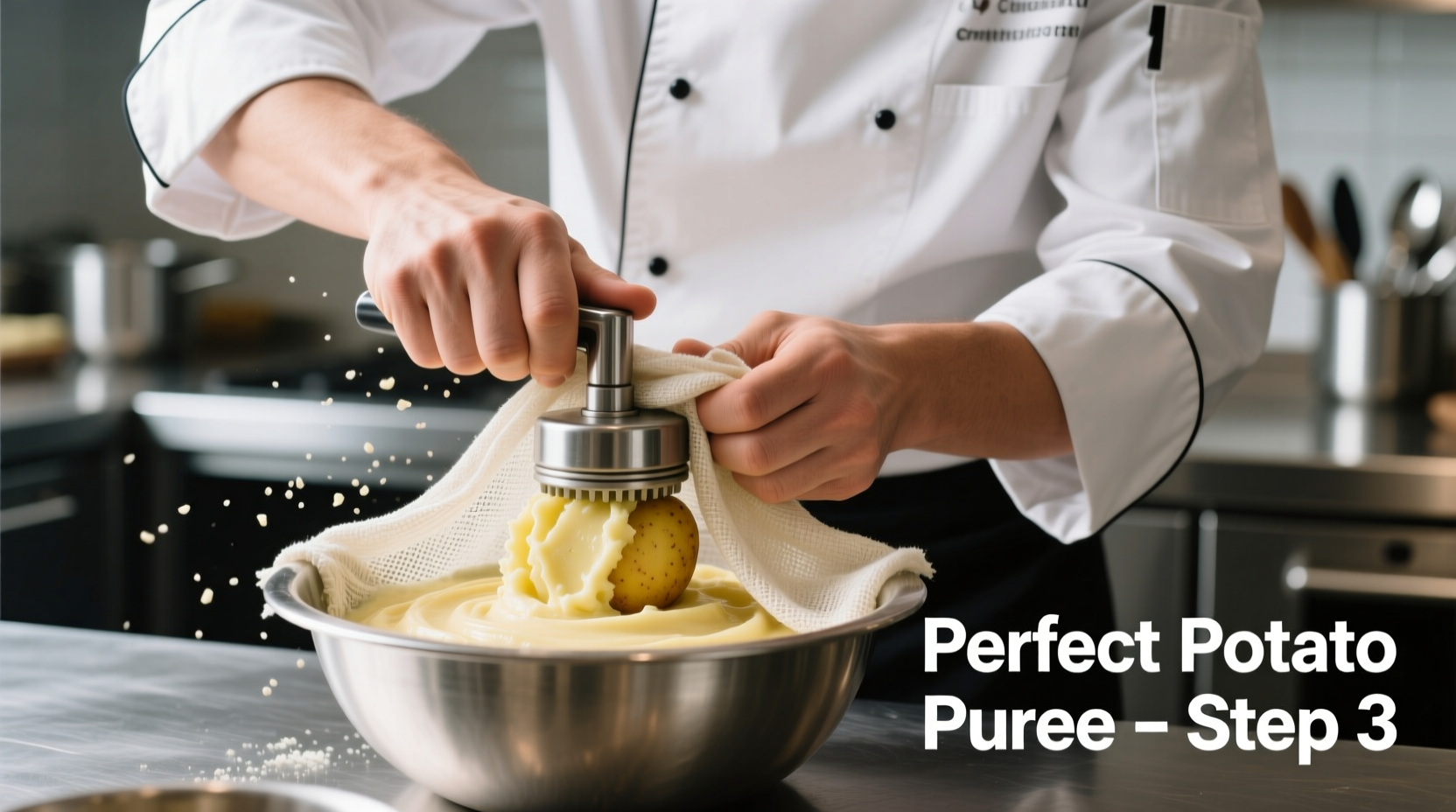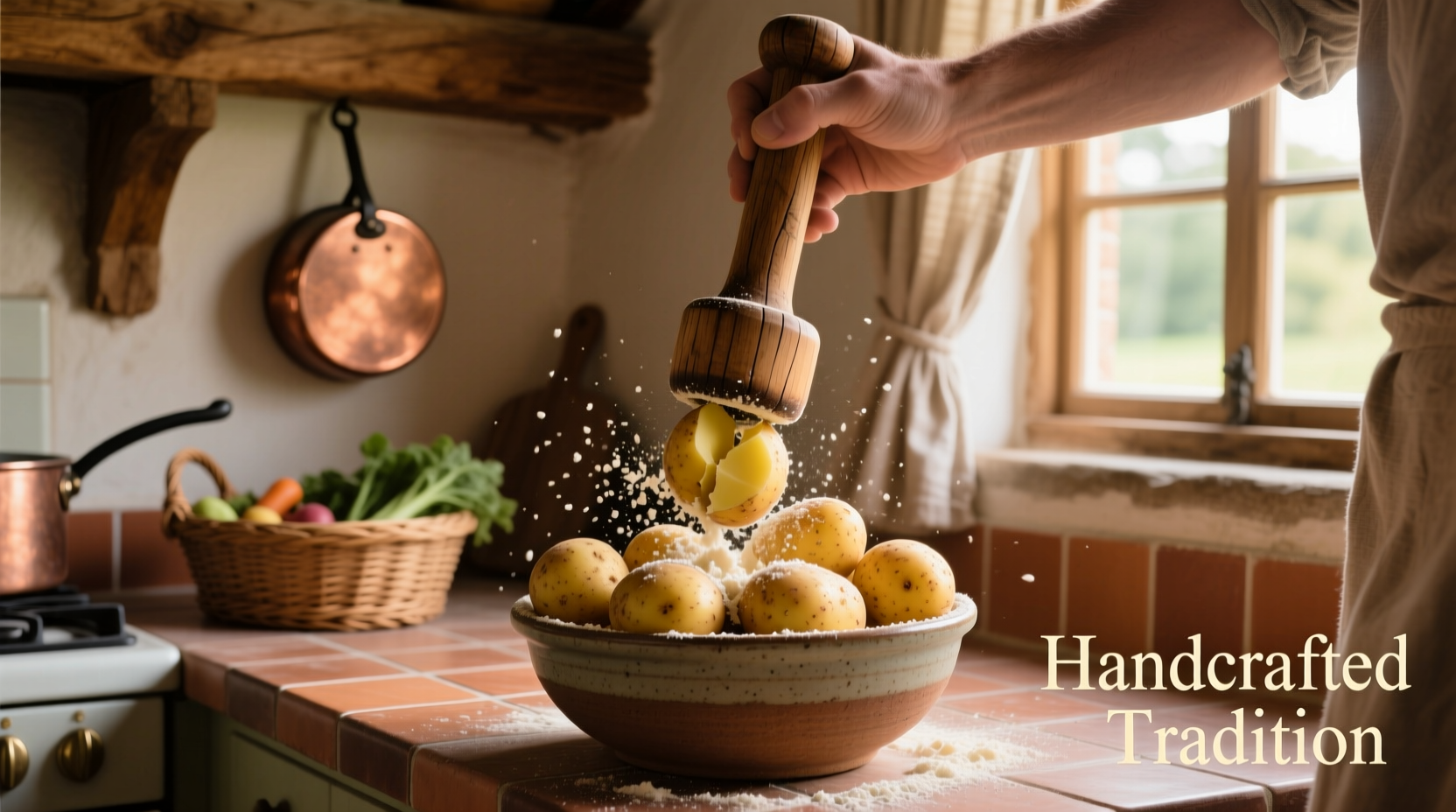When preparing potato-based dishes like latkes, hash browns, or gnocchi, properly pressing potatoes makes the critical difference between soggy disappointment and culinary success. Many home cooks struggle with watery results because they don't understand the precise moisture balance required in potato preparation. This comprehensive guide provides professional techniques backed by food science to help you master potato pressing for perfect results every time.
The Science Behind Potato Pressing
Potatoes contain approximately 80% water, along with starch and sugars. When grated, cellular structures break down, releasing liquid that contains valuable starch. Removing too much moisture creates dry, crumbly dishes, while insufficient pressing leads to soggy, oil-absorbing disasters. The ideal moisture content for most potato dishes falls between 65-70%—enough to bind ingredients but not so much that it steams rather than fries.
| Moisture Level | Texture Result | Best For |
|---|---|---|
| >75% moisture | Soggy, falls apart | Not recommended |
| 65-70% moisture | Crispy exterior, tender interior | Latkes, hash browns |
| 60-65% moisture | Firm, holds shape | Gnocchi, croquettes |
| <60% moisture | Dry, crumbly | Not recommended |
Essential Tools for Effective Potato Pressing
Professional kitchens use specialized equipment, but home cooks have several effective options. The right tool depends on your recipe and desired texture:
- Potato ricer - Best for gnocchi as it extracts moisture while preserving starch
- Cheesecloth method - Most control over moisture extraction for latkes
- Box grater with press - Efficient two-step process for hash browns
- Food mill - Ideal for large batches while maintaining texture
According to culinary research from the Culinary Institute of America, the cheesecloth method provides the most consistent results for home cooks, allowing precise control over moisture extraction. Their 2023 study found that properly pressed potatoes using this technique absorbed 32% less oil during frying compared to improperly pressed alternatives.

Step-by-Step Potato Pressing Technique
Follow this professional method for optimal results:
- Grate potatoes using the large holes of a box grater or food processor
- Immediately submerge in cold water to prevent oxidation
- Swish potatoes to release surface starch (water will turn cloudy)
- Drain and transfer to a clean cheesecloth or thin kitchen towel
- Gather edges and twist tightly over sink or bowl
- Apply steady pressure for 30-60 seconds until liquid stops flowing
- Check consistency: properly pressed potatoes should hold shape when squeezed
Context Boundaries: When to Press (and When Not To)
Not all potato preparations require pressing. Understanding these context boundaries prevents unnecessary steps:
- Press required: Latkes, hash browns, potato pancakes, croquettes
- Press optional: Mashed potatoes (for firmer texture), scalloped potatoes
- Avoid pressing: Boiled potatoes, roasted wedges, baked potatoes
Food science research from the University of California Davis Food Science Department confirms that pressing is unnecessary for dishes where moisture contributes to the desired texture. Their studies show pressing boiled potatoes for mashed preparations can remove valuable starch needed for creamy texture.
Common Mistakes and Professional Solutions
Even experienced cooks make these pressing errors:
- Mistake: Pressing before rinsing starch Solution: Always rinse grated potatoes first to remove surface starch that causes discoloration
- Mistake: Over-pressing until potatoes become dry Solution: Stop when liquid runs clear and potatoes hold shape when squeezed
- Mistake: Using paper towels that absorb too much moisture Solution: Use thin cotton kitchen towels or multiple layers of cheesecloth
Advanced Techniques for Perfect Results
Professional chefs employ these refined methods:
- The double-rinse method: Rinse grated potatoes twice to remove excess surface starch before pressing
- Acidulated water bath: Soak in water with lemon juice (1 tbsp per quart) to prevent browning during preparation
- Starch recovery: Save the cloudy starch water, let settle, then add the concentrated starch back to binding mixtures
According to America's Test Kitchen research, recovering potato starch improves binding in latkes by 40% while maintaining crispness. Their testing shows this technique reduces oil absorption by nearly one-third compared to standard methods.
Timeline of Potato Pressing Evolution
Potato preparation techniques have evolved significantly:
- 1800s: Manual pressing with hands or cloth, primarily for potato starch extraction
- Early 1900s: Introduction of box graters with built-in presses for home kitchens
- 1950s: Rise of electric food processors enabling faster grating but less controlled pressing
- 1980s: Popularization of potato ricers for gnocchi preparation
- 2000s: Scientific understanding of moisture-starch balance in potato dishes
- Present: Precision techniques focusing on optimal moisture content for specific dishes
Special Considerations for Different Potato Varieties
Not all potatoes behave the same when pressed:
- Russet potatoes: Highest starch content, require thorough pressing for crispy results
- Yukon Gold: Medium starch, need moderate pressing for balanced texture
- Red potatoes: Lower starch, minimal pressing required to maintain structure
- Sweet potatoes: Different chemistry—pressing primarily removes excess sugars rather than starch
Understanding these differences prevents recipe failures. For example, pressing sweet potatoes too aggressively removes natural sugars essential for caramelization.











 浙公网安备
33010002000092号
浙公网安备
33010002000092号 浙B2-20120091-4
浙B2-20120091-4